
The Mevlevihane Museum, also known as the Mevlevi Monastery Museum or the Dervish Monastery (Dervish Lodge Museum, Turkish name: Mevlevihane Müzesi) is a museum complex in Antalya, which has been preserved in good condition and which can be visited today.
The complex is part of the revered religious object of Antalya - the minaret of the Yivli Mosque. Himself Yivli Minaret and mosque are located across the street (to the south) from the museum complex. The whole architectural complex is generally referred to as a kullye, consisting of buildings of religious purpose.
The Mevlevihane Museum is located on a terrace in the old town of Antalya (Kaleiçi) and consists of the monastery of the Mevlevi dervishes, a hammam, two mausoleums, a cemetery, a madrasah and ruins.

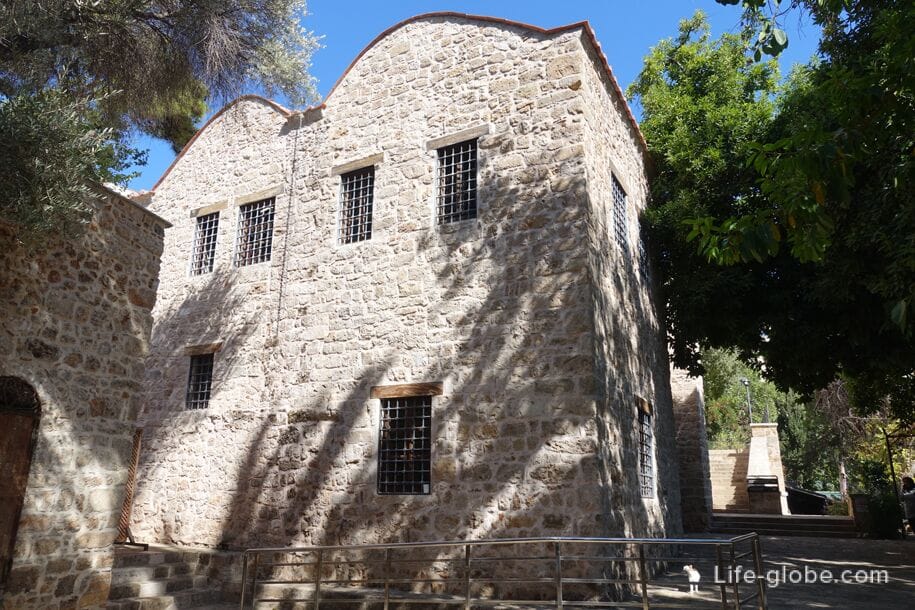
The main and central building of the museum complex is the abode of the Mevlevi dervishes, which is also known as the tekke of the Mevlevi Dervishes of Antalya. It was a meeting place of the Order of dervishes, where they also studied the spiritual teachings of Mevlan, the founder of the doctrine. "Mevlana" is translated from Arabic as "Our Lord".
The building was built in the time of the Seljuks, and was probably used as outbuildings of the "Seljuks' palace". During the Teke Beylik period, the building was used as a library. Since the beginning of the 16th century, during the Ottoman Empire, it was handed over to Muslim dervish monks of the Mevlevi order; and the building began to be used as a tekke by the Mevlevi dervishes.
The construction of the building is attributed to Aladdin Keykubad in 1228.
The building is two-storeyed, has dimensions of 13,45x22,32 meters and a dome ceiling system. On the central dome there is a 6-angle low drum with arched windows and a dome.

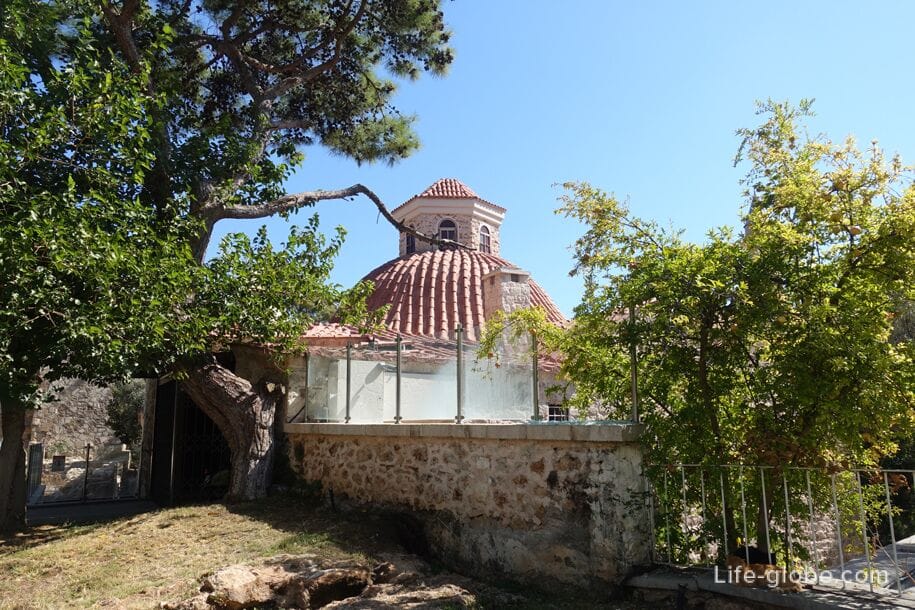
There are 9 rooms in the Tekke building, some of which exhibit some Mevlevi items and clothes, as well as animated stories from the life of Mevlevi dervishes.
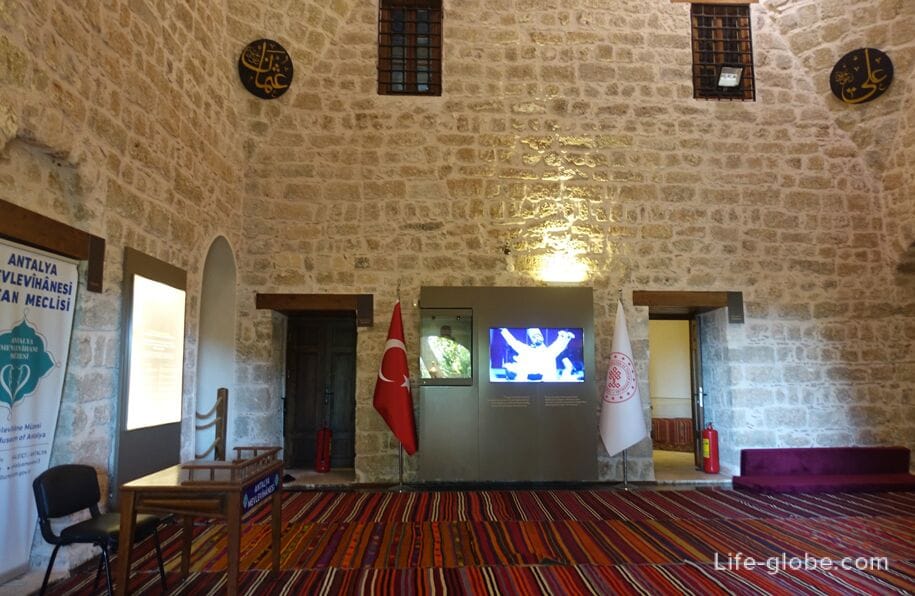
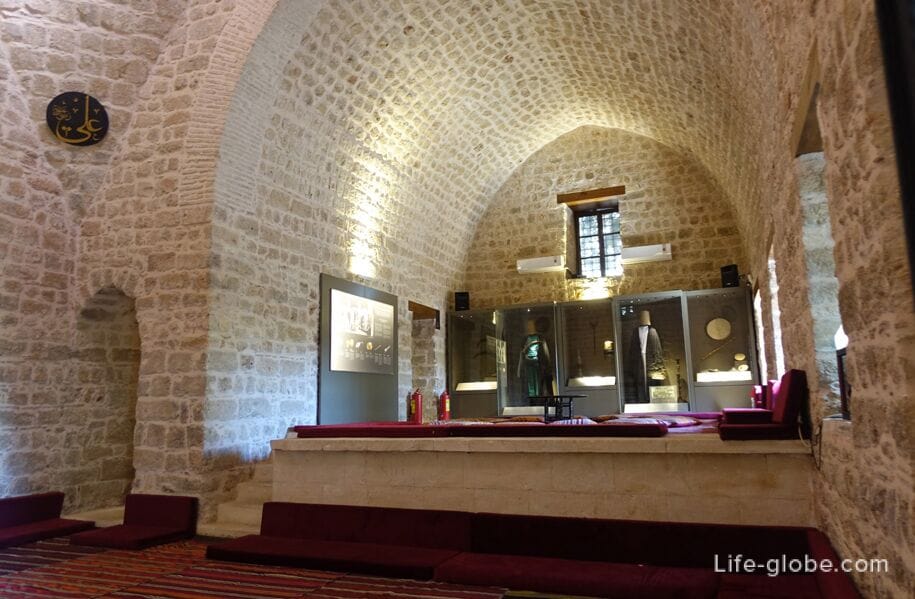
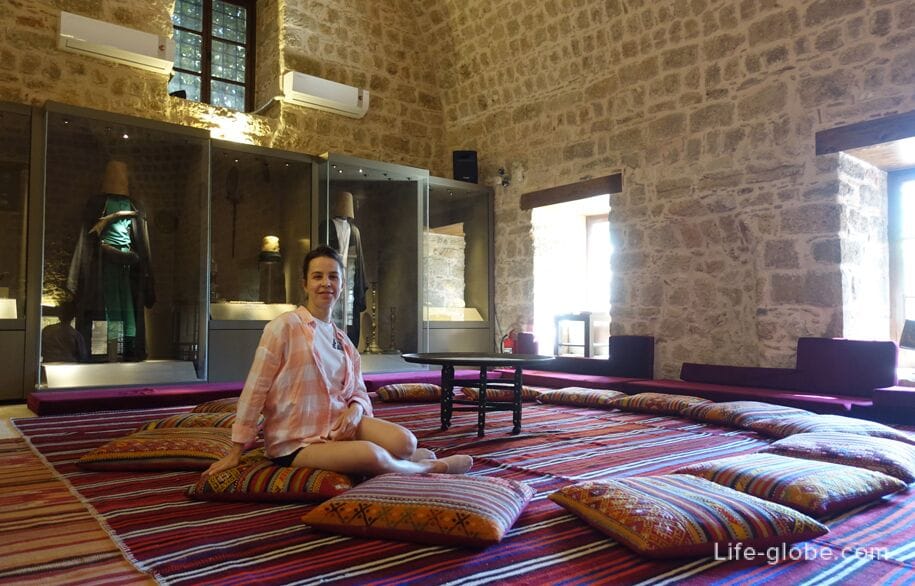

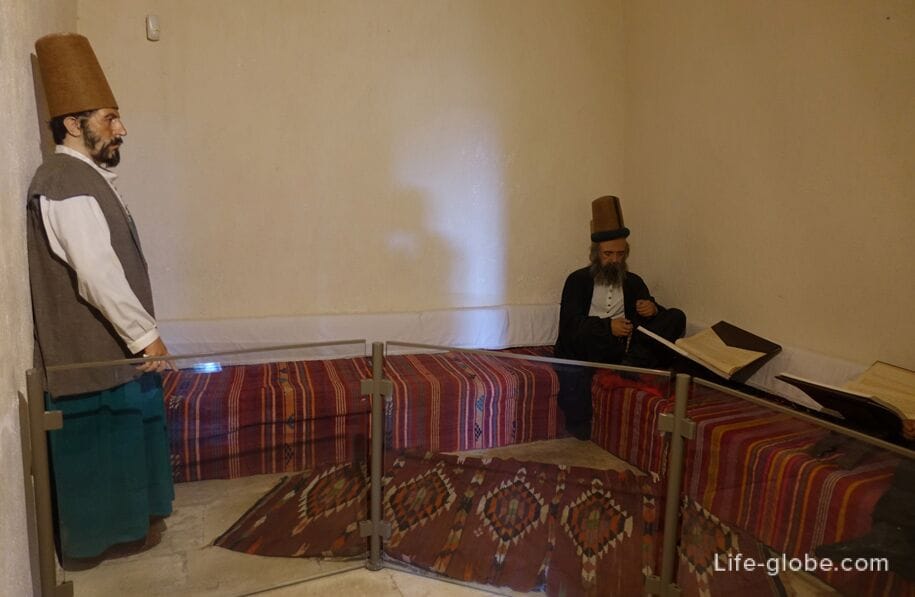
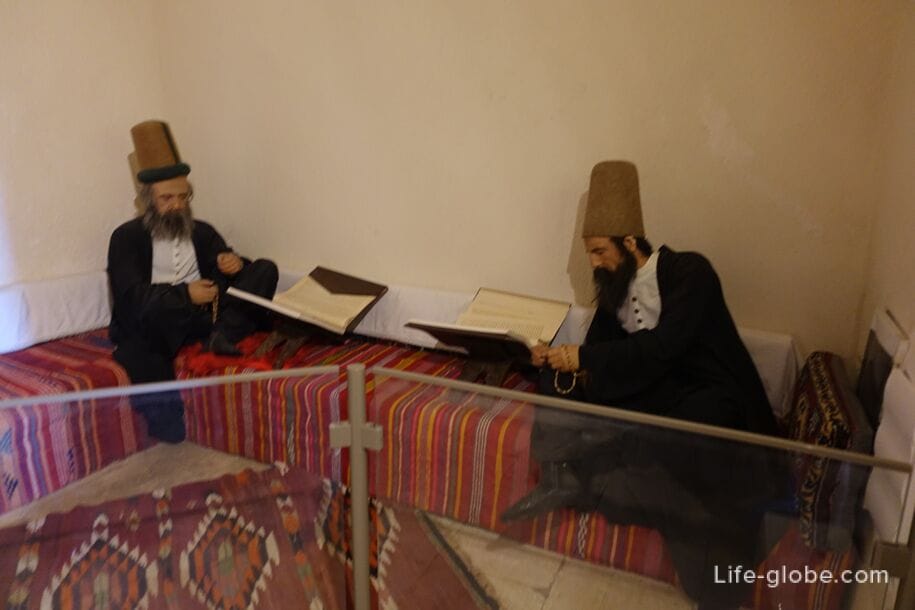
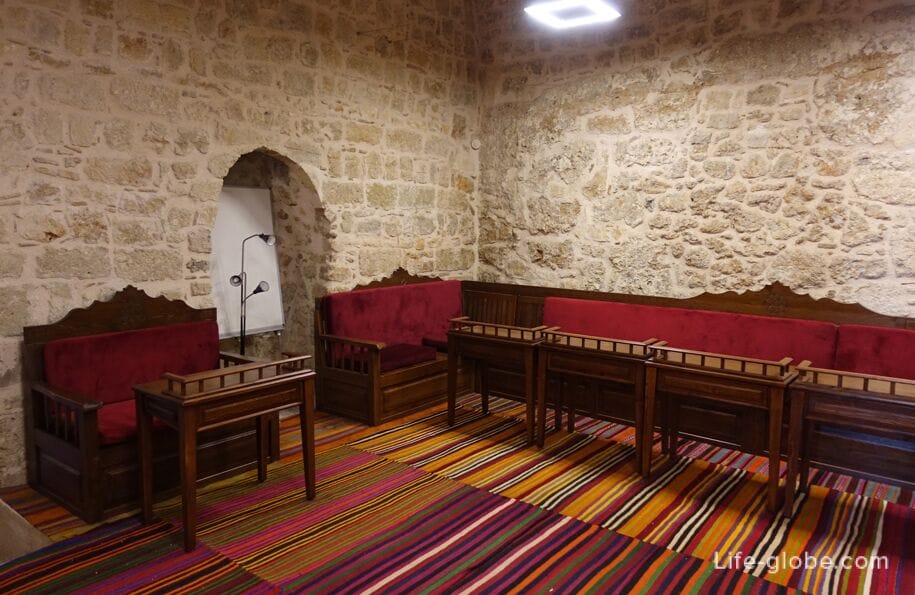
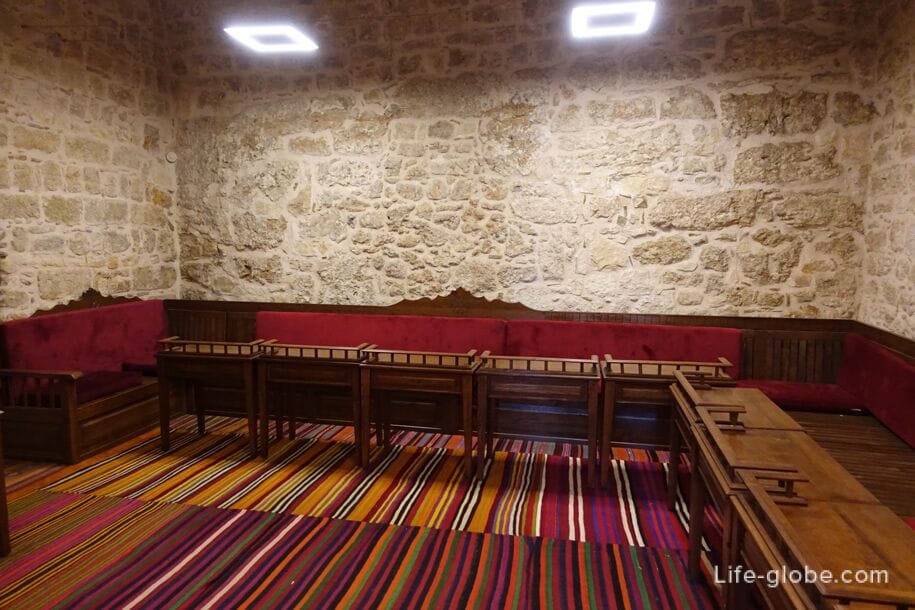
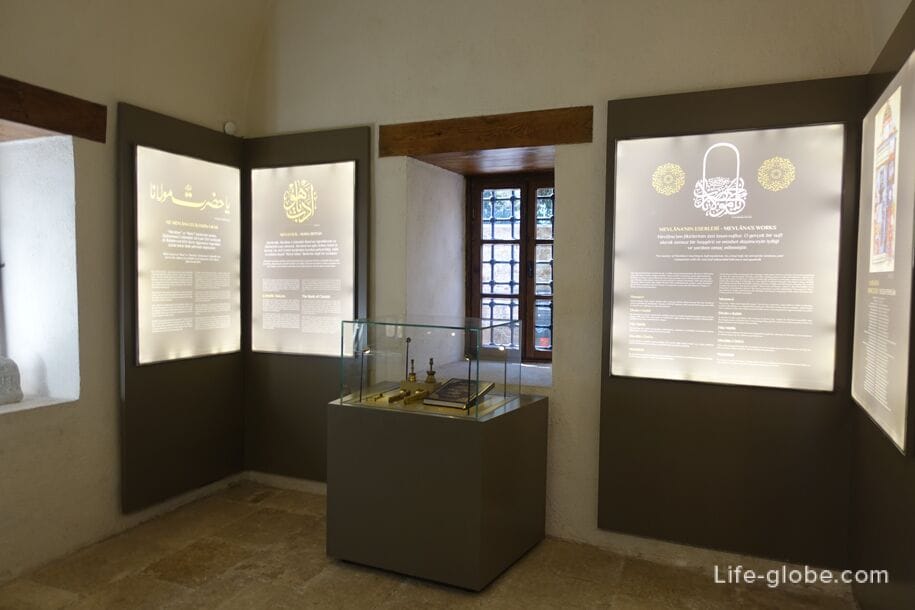
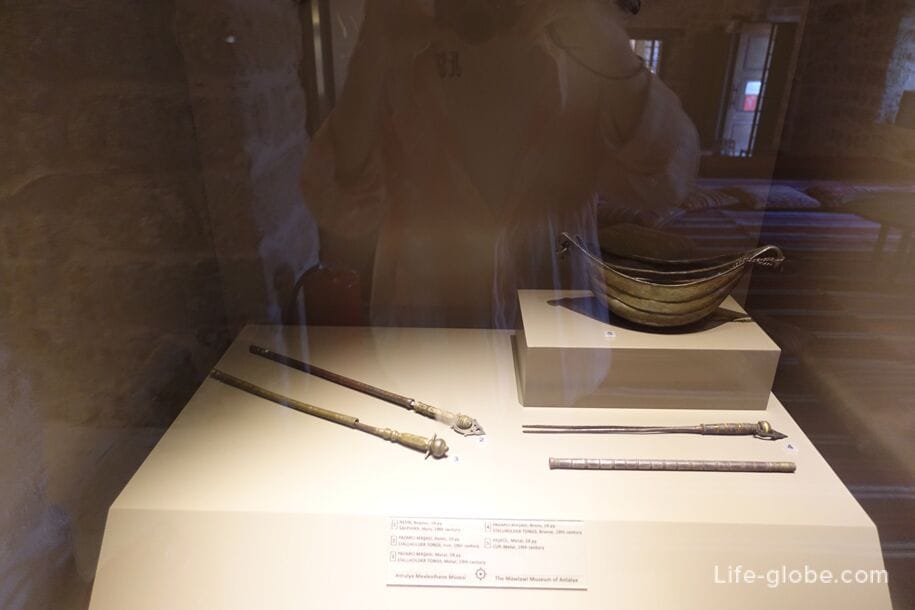
Next to the monastery is the building of the hammam - the Turkish bath of the Yivli Minaret complex.
The exact date of the construction of the hammam is unknown, but according to the inscription on the building, it is believed that it was built by a man named Tugrul in 1225-1226 during the reign of Aladdin Keykubad. Based on the layout and small size of the bathhouse, it can be assumed that it was intended for private use, and not for servicing groups. During the Ottoman Empire, the hammam was used as a bath by the Mevlevi dervishes.
Thanks to the restoration work, the bathhouse is well preserved.
It is also interesting that the northern side of the baths building will be described on the rocks and the old one Antalya fortress wall.
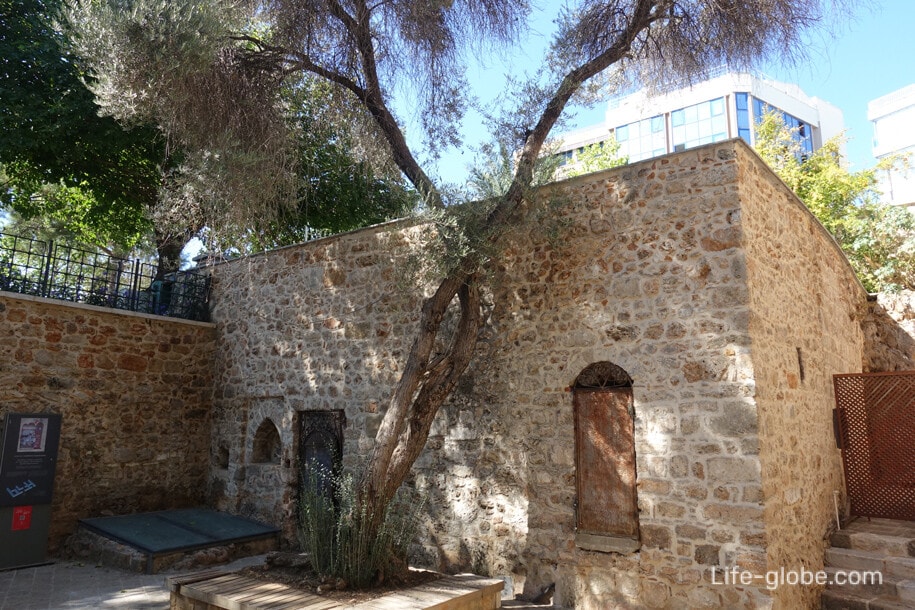
In the eastern lower part of the territory of the museum complex there is a turbe Nigar Khatun (mausoleum-tomb, tomb), built in memory of the name of the wife of the Ottoman Sultan Bayezid II and the mother of Shehzade Korkut.
According to historians, Nigar followed her son Korkut to Antalya, since in 1502 he was sent as a sanjak bey to Tekke (present-day Antalya). Nigar Khatun ordered the construction of her own mausoleum in the Yivli Minaret complex in the Seljuk style, where she was subsequently buried.
The turbe has a hexagonal shape of rubble and stone, a tiled pyramidal roof and an internal dome.
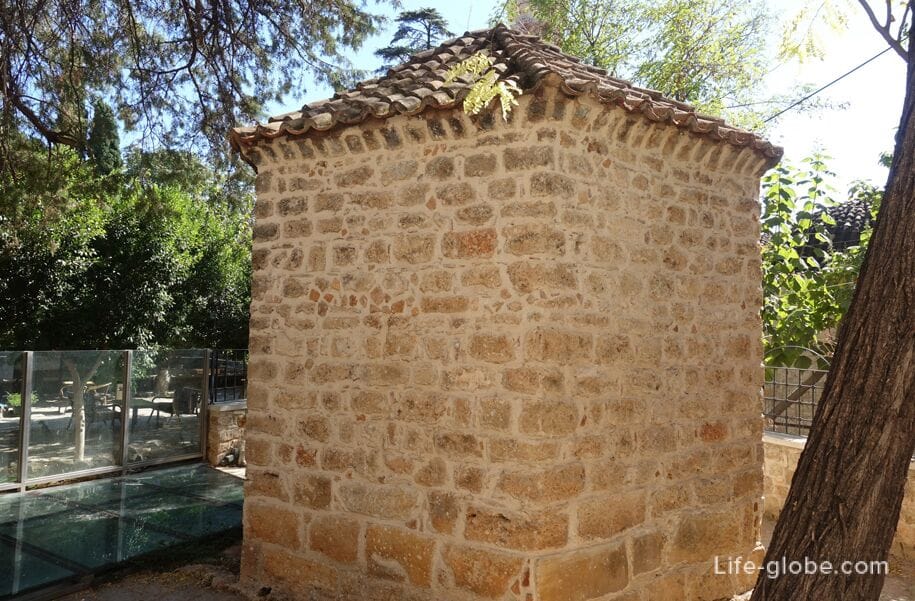


Above the turbe, in the northern part of the territory of the complex, there is Zindzhirkyran Mahmet Bey mausoleum, built in 1377.
The mausoleum of Mahmet Bey is built of hewn stone and in the style of the grave of the Sejuk has an octagonal plan and a pyramidal roof erected on a low square base. Inside there is one dome.
Above the entrance door there is a stone ring, which symbolizes the chains that Mehmet Bey broke and thanks to which he was a famous man. He was a commander and spent his life fighting against the Cypriots. During the fight against the Crusaders Cyprus he broke powerful chains in the port of Antalya. It was also he who carried out an extensive restoration of the Yivli Minaret Mosque, which was originally built during the time of the Seljuk Aladdin Keykubad.
The marble inscription above the door says that the mausoleum was built at the end of December 1377 by Muhammad, the son of Mahmud, the son of Yunus Bey, for his late son Ali.
There are three sarcophagi in the mausoleum, probably Zinjirkyran Mahmet Bey, son of Emir Zadeh Aliya and Mevlevi Dervish Mustafa Efendi.
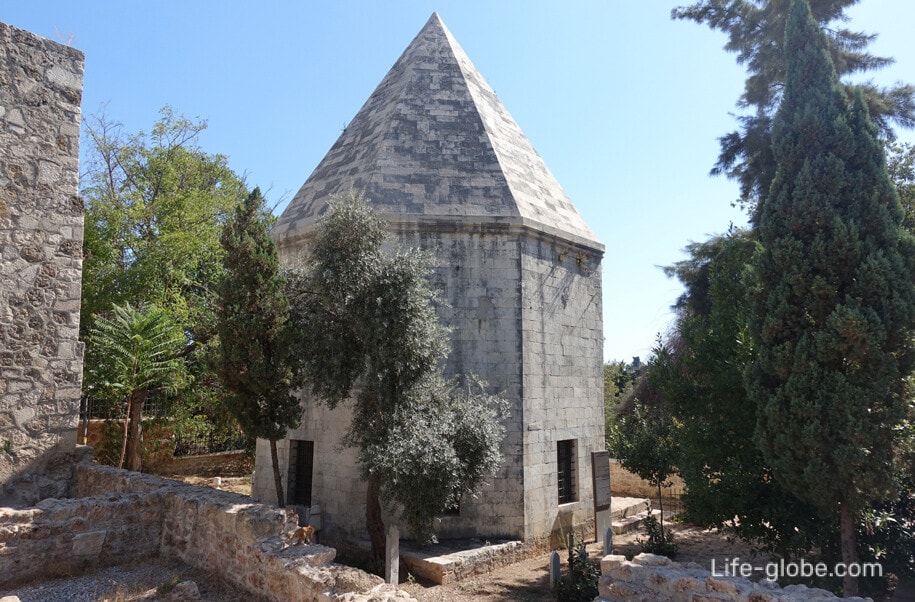

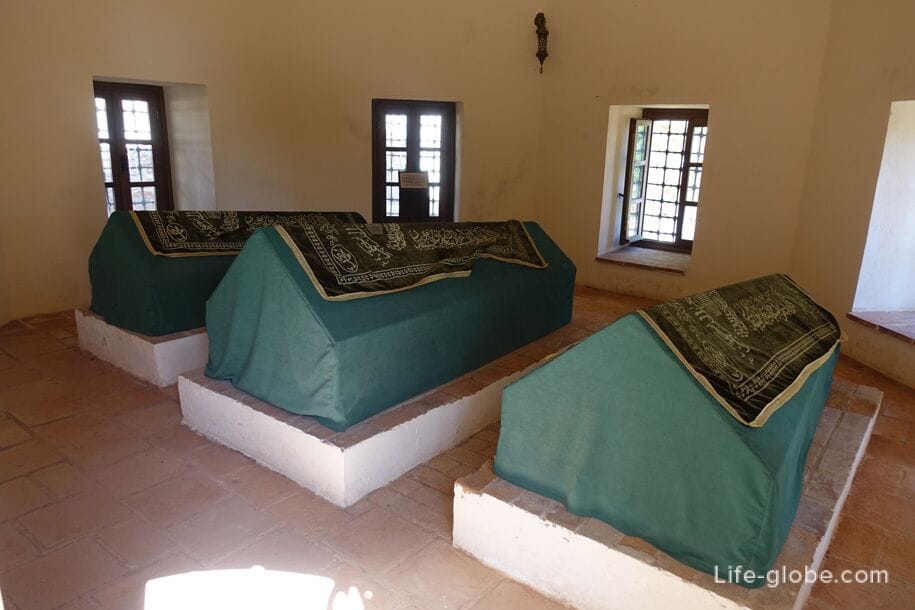
Next to the mausoleum there is a small cemetery and some ruins.
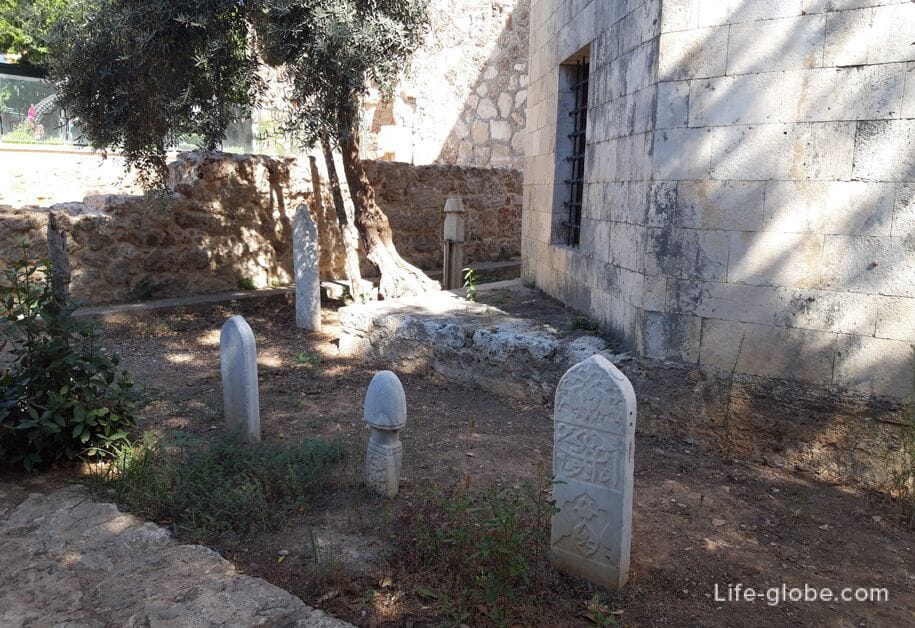
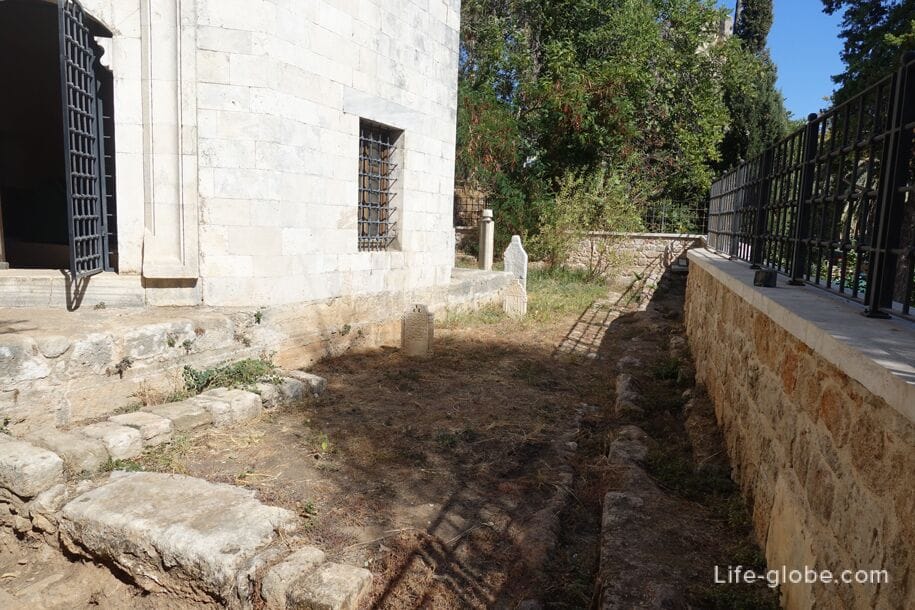
In the north, behind the mausoleum and the building of the Mevlevi monastery, you can see the ruins of the former city defensive walls and the remains of the Antalya tower.

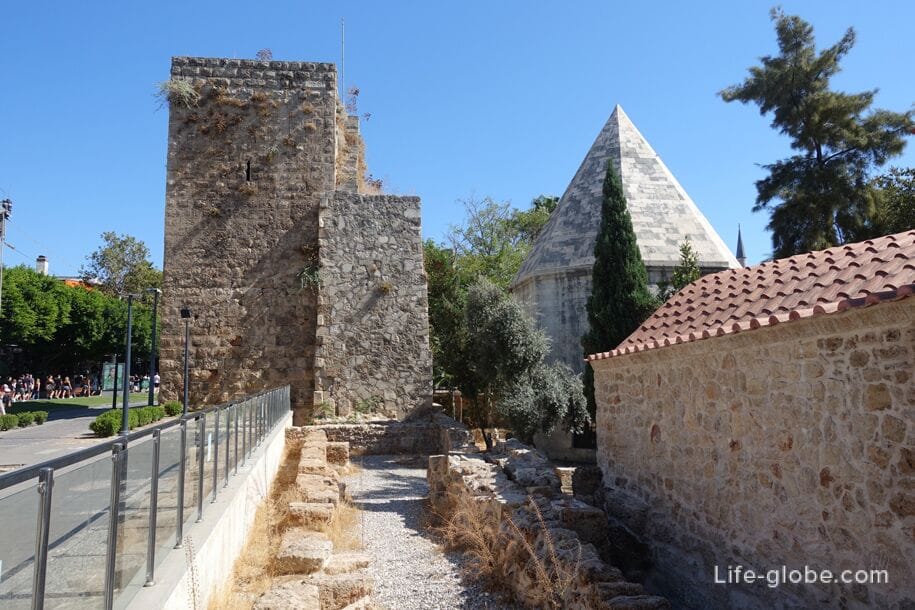
Near the Mevlevihane Museum complex, in addition to the minaret of the Yivli mosque, there are two former madrasahs - a Muslim religious and educational institution of the second stage (after the primary).
Madrasah Imaret, built in the first half of the 13th century and also called the "Seljuk Palace".
The building was built by Kei-Khosrow I in the first years of the conquest (March 5, 1207) and probably acquired its present appearance during Kei-Kavus I and Kei-Kubad I.
Under the Mevlevi dervishes, the building was used as a madrasah.
The majestic central door of the building, made in the form of a semi-dome, has a rectangular shape. The building also has a porch, a courtyard and interior spaces.
Today there is a shopping center here.

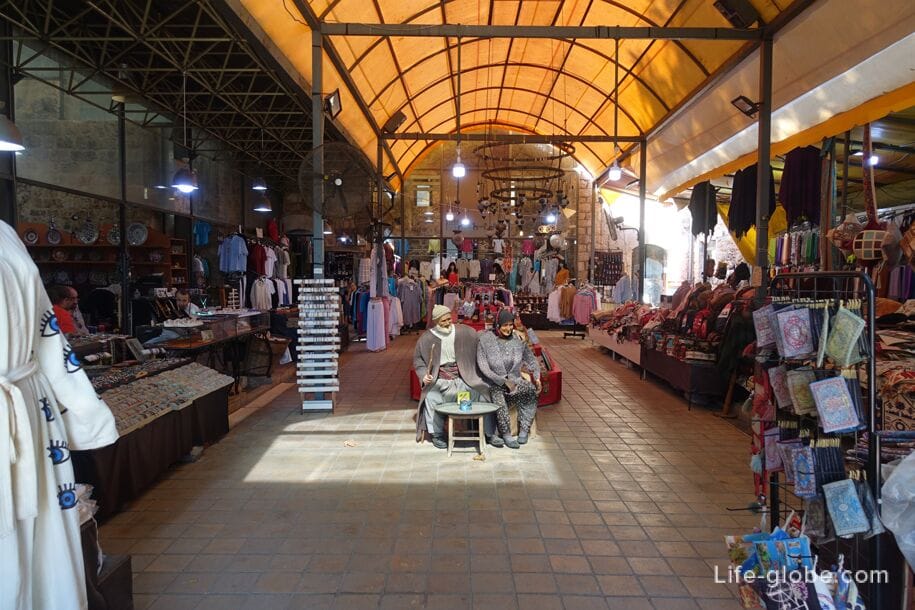
Atabey Armagan Madrasah (or Giyasaddin Kay-Khosrov madrasah) are the ruins of a former madrasah, which are located directly at the foot of the Yivli minaret.
Only the gates and part of the basic traces remained of the madrasah. The low arched entrance gate covers the curb, which is made of triangular and semi-star motifs. The curbs are covered with zigzags.
Above the gate passage, in a pointed arched niche, there is a six-line inscription in the style of Tulut, which informs that the madrasah was built during the time of Gayasaddin Kei Khosrow by "Atabey Armagan" in 1239-1240.
It is known that Armagan Bey was in the palace-ministerial position during the time of Giyasaddin Kei Khosrov and was appointed to the Atabeg position of Izeddin Keikavus in 1237-1238 (635 AH - Muslim chronicle). He suppressed the Babi uprising as an army commander in 637 AH (1239-1240) and died in 638 AH (1240-1241).

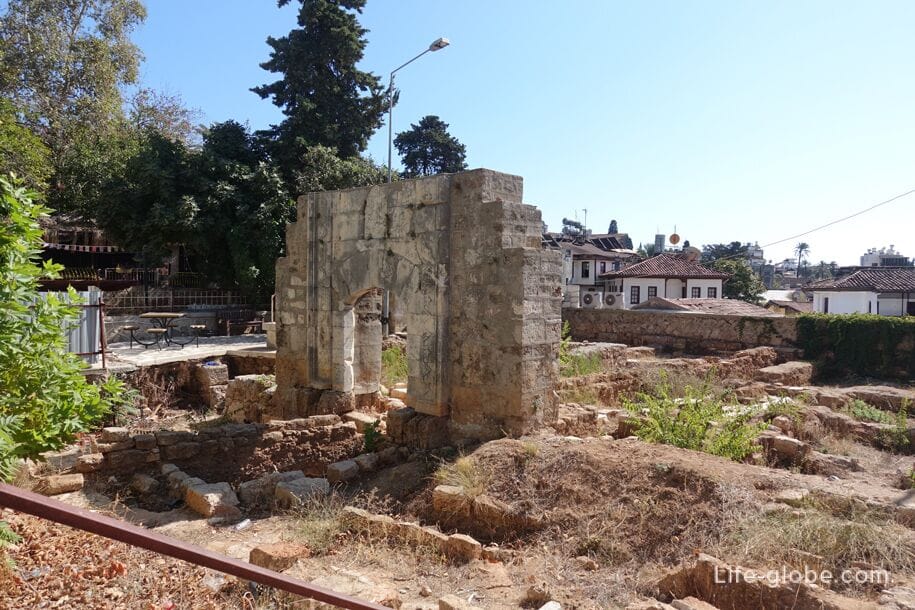
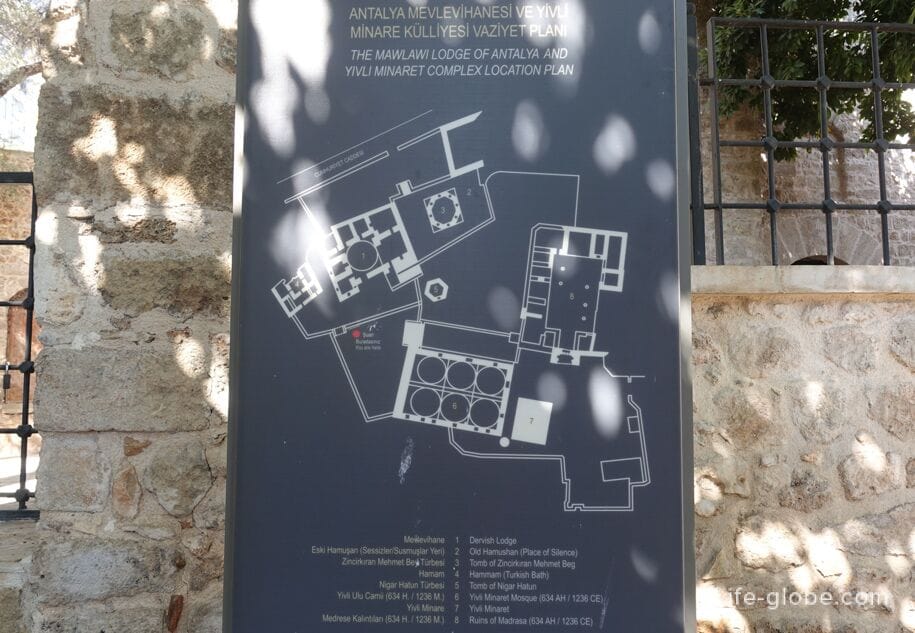
Entrance to the Mevlevihane Museum complex is free.
Address: Selçuk Mahallesi İskele Caddesi.
All accommodation facilities in Antalya (hotels, apartments, villas, guest houses, etc.), including in the historical center of the city, near beaches and more remotely from those, can be view and book here